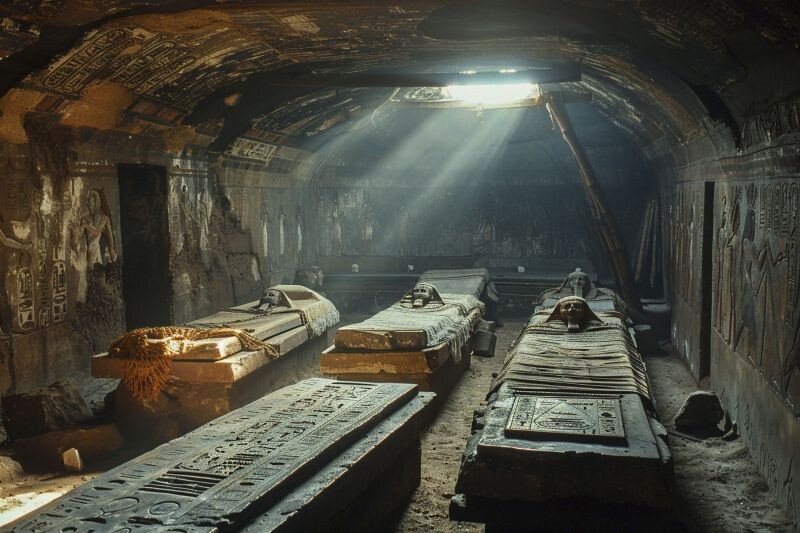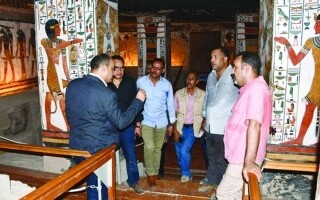
A recent archaeological discovery in the Asasif necropolis in Thebes has revealed an unprecedented tomb that offers a unique perspective on a period that has been underrepresented in Egyptian history. While Asasif is known for its tombs from the New Kingdom and Dynasties XXV and XXVI, this astonishing revelation significantly broadens the historical scope of ancient Egypt.
The finding was led by Egyptologist Elena Pischikova, who has headed the South Asasif Conservation Project since 2006. The tomb found, whose attribution to a specific individual is yet to be determined, has revealed surprising architectural and decorative details. The most notable aspect of this tomb is its design, which reflects the characteristics typical of the Middle Kingdom, a stage that has been inadequately represented in the region until now.
Although the structure of the tomb shows signs of deterioration, the remnants discovered, such as fragments of wall decoration and architectural elements, allow for the identification of the style and funerary orientation of the period. Additionally, the tomb has undergone modifications over time, suggesting that it was reused at different stages of history, a common practice in ancient Egypt.
The architectural and decorative style of the recently discovered tomb in Asasif shares features with other Middle Kingdom tombs found in various regions of Egypt, such as Beni Hasan and Lisht. The tombs from this period are notable for their sobriety in design and decorations that include religious and personal themes, such as scenes from daily life and offerings to the gods. Some characteristics that could be related to other Middle Kingdom tombs include simplicity in construction, decorative fragments reflecting religious beliefs and the daily life of the deceased, as well as possible inscriptions or representations related to the Book of the Dead.
In summary, this archaeological discovery in Asasif is changing our understanding of Ancient Egypt by providing a more complete and detailed view of a historical period that has been little explored until now.











